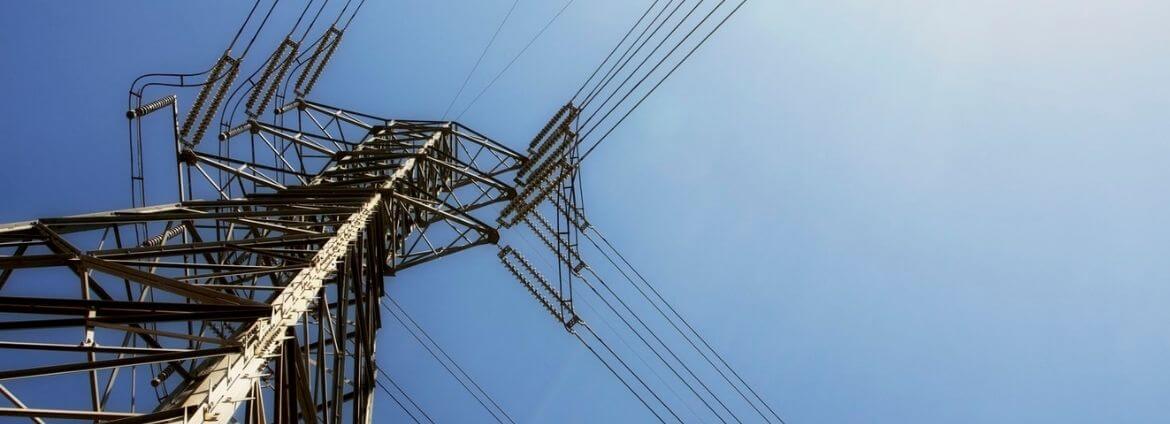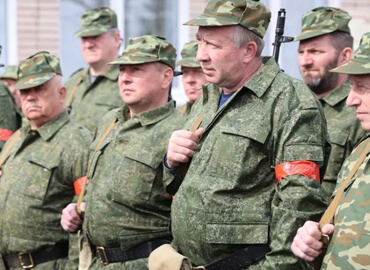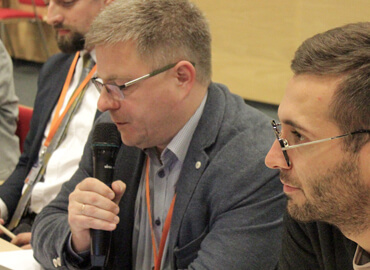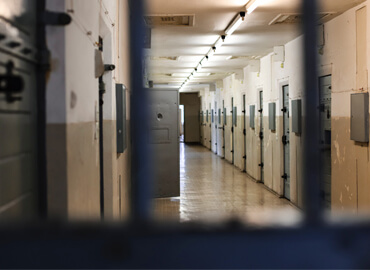On October 5, 2021, Decree No. 381 «On the construction of electrical distribution networks» was signed. The Ministry of Energy’s press center called the event «an improvement in the procedure for the construction of distribution grids and its financing in individual residential development.»
Unwilling investors
Let us consider in detail the essence of the improvement. According to paragraph 1.2 of the Decree, not only the costs of connecting to the networks, but the creation of new distribution power lines will now be financed by subscribers. That is, now subscribers pay for the design, purchase of equipment, and labor on the construction of power distribution lines.
That is. citizens must also pay to become clients of the State Production Association Belenergo.
This is the epitome of imposing of a monopoly position.
According to global practice, putting funds towards capital construction is an investment. The Belarusian people and businesses in this way became investors in the State Production Association Belenergo. True, usually for investments in a company, the investor obtains the right to dispose of a part of the company through obtaining a certain number of shares in ownership. This part of the «investment agreement» was omitted from the decree. They essentially retained responsibilities from the usual relationships but excluded the rights. They left payments and obligations, however excluded rights and benefits.
Reconstruction at the cost of the consumer
Clause 1.3 of the Decree concerns existing networks and whether it is necessary to rebuild them. According to the clause, a gradation of state funding for the reconstruction of power grids is established, depending on the level of depreciation.
If the depreciation level is set at 100%, reconstruction is conducted «at the expense of the national budget allocated for the implementation of state programs, the budgets of energy supply companies, and other sources.»
If we start from the fact that the sources are listed in order of importance, then the people will also pay for the reconstruction of existing networks, not directly, but through the state budget. The main goal of depreciation is the restoration of fixed assets after the end of their period of operation. Of course, investments have been around for a long time, and the persistently high inflation due to an ill-considered monetary policy has devalued part of the amortization savings. Now the reconstruction of worn-out networks must be paid by citizens from their taxes.
The case in which depreciation is defined at less than 100% is also not being made clear. In such cases, 70% of the costs will be covered by funds from the national budget allocated for the implementation of state programs the budgets of energy supply companies, and other sources, and the remaining 30% «at the expense of individuals who own single-family apartments in multi-dwelling residential buildings and shares in the right of common ownership of single-family, multi-dwelling residential buildings (apartments in multi-dwelling residential buildings), based on investment agreements with an energy supply company.»
It is significant that the document states directly that Belenergo considers such financing an investment. But for these investments, the consumer will receive nothing in return.
If existing networks are not yet fully depreciated, subscribers pay for 30% of services. It is obvious that reconstruction in part from depreciated electrical networks can be carried out because of insufficient network capacity (read: an incorrect estimate of the electrical load). That is, for prior miscalculations of the estimate of the load in the design of networks, it is now proposed that the people will pay in part. Yes, it is very difficult to accurately predict the load level 30–40 year in the futures, but therein lies entrepreneurial risk. In Belarus, the payment for these miscalculations is imposed on electricity consumers.
In addition, it is not clear why the people in such cases finance 30% of the reconstruction instead of it being in proportion to the level of depreciation. Now Belenergo will have an incentive to maintain the level of depreciation of the network slightly below 100% in various ways in the hope that the people will pay 30% of the cost of the new line. Now, however, it may be more profitable to build a new line to homes than to repair the old one, as the people will pay for the new one while the repair costs for the old one will have to be covered 70% by Belenergo. And reasons for why it is impossible to reconstruct an old line can be thought up. But even when reconstruction is considered, the people will pay 30% of the line directly from their income and another 70% indirectly through their taxes. It should be remembered, however, that these networks are also largely outdated.
It is also important to mention that electricity tariffs include the costs of operating distribution networks and taking them out of service (return of funds invested in fixed assets). It would be logical to develop a separate tariff for subscribers who have built their own networks. This tariff would not include the depreciation component for this subscriber group. But the decree under consideration does not mention a separate tariff for electricity. This means that their tariffs will include the costs of depreciation of other networks. As a result, they will pay once the costs of creating a network for their own consumption (directly or through the national budget), and then, as electricity is consumed, they will also pay for taking other networks out of service. It is worth adding that this decree does not apply to urban development (that is, it does not apply to apartment buildings – only individual buildings). That is, payment for distribution networks will also be imposed on the poorest segment of the population – rural residents. In elite private home settlements, the networks are relatively new and with reserve capacity. But villages with old networks will pay for their upgrading.
Protecting the monopoly
According to Clause 1.4. of the Decree, distribution electrical networks erected and reconstructed with the involvement of funds from individuals in accordance with this Decree are the property of Belarus and belong to energy supply companies based on their right to economic management.
That is, networks established at the expense of citizens will not remain under their ownership. They will belong to the Republic of Belarus, and they will be serviced by companies of the State Production Association Belenergo. In fact, there is no obstacle for this company to serve networks owned by citizens like this. But this would create a threat to the monopoly.
If the grids are left to the ownership of citizens, a situation may arise when citizens begin to produce energy themselves, build infrastructure from other contractors, or buy electricity from other producers and distribute it among subscribers through their grids.
This situation is highly undesirable for the country’s leadership. Therefore, the distribution of electricity is a monopoly activity. The same law on natural monopolies states that «a natural monopoly is a state of the market for services, in which the creation of competitive conditions to meet the demand for a certain type of service is impossible or economically inexpedient due to the technological characteristics of the production and provision of this type of service.» As we see in this case, however, the creation of networks at the expense of third parties (not at the expense of Belenergo) is technically possible, and likely economically feasible if subscribers are willing to pay for the creation of networks. This means that the having this decree enter into force, the distribution of electricity can no longer belong to monopoly types of activity, as there are several investors with economic interests in having their money invested in distribution networks.
Challenge in implementation
Some details of the implementation of the decree were ordered to be disclosed to the Council of Ministers. It makes sense to pay attention to the practical implementation of some points.
For example, it is not clear from the text of the Decree how subscribers who connect to the existing network will partially reimburse those who originally paid for its construction.
Another important issue is the question of what will happen to those subscribers who do not want to change the network. For example, in a small village a part of the population decides to install electric heating, but the old network is not ready for such an increase in load. Let’s say some people agree to pay for the reconstruction of the network, but what about people who are heated by other types of energy and who are not interested in a new line? Will they get a new line for free that their neighbors will pay for? Will they be disconnected from the power supply? Will they be obligated to pay for a new line they don’t need? Will measures of administrative coercion be applied?
A different situation could be assumed – that the residents of the village paid for the construction of a new line, but after 10 years the village expanded, and the line was then insufficient. We need modernization. Will the people who originally paid for the construction of the line pay again for its reconstruction?
There are many such questions to the document under consideration. This is a result of having the Decree initiated and developed by a government agency that has no citizen representation. The people (consumers of electricity in this case) cannot initiate the adoption of the decree and they are unable to participate in its development. At any rate, when developing a law in a legitimate parliament someone would normally ask questions about why people should pay separately for infrastructure, the creation of which should already be included in the tariff, and where did these depreciation deductions from the same tariff payments have gone.
Formally, public discussions on the Decree were held at the Belarus Legal Forum from March 12 to 22, 2021. But in fact, there was practically no discussion on the issue of adopting such an important Decree that will affect millions of people. There are no announcements about any discussion either on the website of the Ministry of Energy, in their official Telegram channel, or on popular media platforms. 10 days were allocated for discussion. Moreover, March 12 was a Friday and March 22 was a Monday. That is, 4 of those 10 days were weekend days. The result is clear: comments and suggestions were not received in time. The drafters of the Decree were not concerned about the real opinion of consumers.
The cost of the sale
It is worth noting why this decree is coming out right now. The fact is that in Belarus the number of requests for electric heating is growing, which significantly increases the electrical load, making it difficult for distribution networks to cope. They need to be changed, but there are no financial resources for this. Therefore, in the paradigm of our public administration, it is obvious why the idea arose to charge people for it.
So that the reader does not have a false impression that these are insignificant costs, the Decree contains a list of equipment included in distribution networks from 0.4 kw to 20 kw. There are 201,000 km of these networks in Belarus consisting of more than 70% of the total length of the lines. This also applies to transformer and their distribution equipment (74,775 units). According to the head of the strategic development department, Andrey Zenonovich Negodko, «power lines with a voltage of 0.4-10 kw have the most wear and tear. The length of these lines, which have run the course of their standard service life, is 51.4% of their total length.» Over the next five-year period, Belenergo plans to reconstruct only 12,400 km.
It seems that lawmakers did not ask the question of how much it would cost a subscriber to switch to electric heating. Perhaps 30-50 years in the future this event will pay off. But let us try to calculate the costs of a conventional housing development, consisting of 100 households. For such a large building, it will be necessary to change the 6-20 kw line, the 6-20 / 0.4 kw transformer and the 0.4 kw line. Depending on the length of the line, the cost of this work will be in the range of 200-500,000 BYN. Even with a payment of 30% and if all subscribers agree to finance the line, then the cost of the project for each subscriber will be 600-1500 BYN. It is unlikely that everyone will agree to such additional costs, which means that the amount per person/household will grow. Consequently, when a new line is created, the costs will multiply.
Conclusion
Belenergo’s desire to conduct business at the people’s expense may run up against the transition to electric heating and bury all previous efforts to stimulate the population to increase electricity consumption. It is worth remembering that this idea came about following the realization that there would be a surplus of electricity after the NPP was commissioned and additional measures needed to be taken to integrate it. Now we are witnessing the final notes of this campaign. First, electric boilers were launched, which consume electricity and produce thermal energy, the production cost of which (excluding operating costs, investments, and losses during transportation) is about 100 BYN per Gcal. (while the tariff providing full reimbursement of economically justifiable costs for their provision is 107 BYN). Then, tariffs for electricity for heating needs were introduced at the level of 4 kopecks per kWh, with the cost of electricity production through the power system at about 10 kopecks / kWh. The creation of these kinds of preferential conditions for power supply creates a stream of people desiring to switch to electric heating and increases the load on distribution networks, which the population itself is then suggested to finance, which then nullifies all efforts to stimulate the transition to electric heating.
As a result, those with newer networks will benefit and they will be able to heat their homes with electricity at the expense of others (whereas for others, the tariff will rise because someone must pay the difference between the tariff and the cost price). Those who have older networks (usually in remote small settlements) and lower incomes (this is all typically interconnected) will continue to heat by stove. This is what a «social government» looks like when the opinion of the population is not solicited when developing regulations.
The article was prepared by a participant of the SlovakAid scholarship program.
Материал доступен на русском языке: Нет предела «усовершенствованию»










